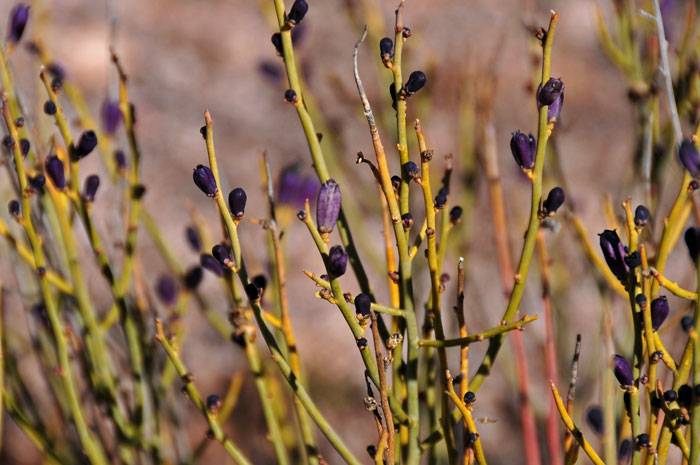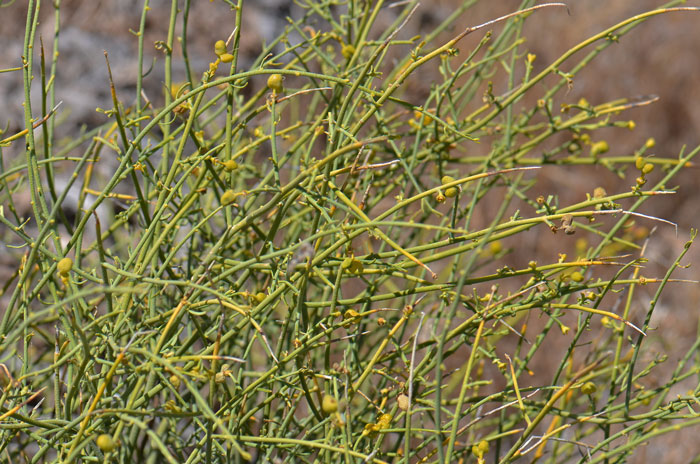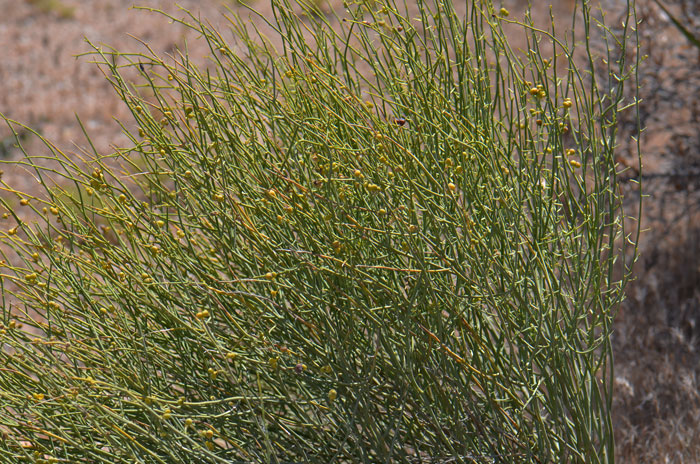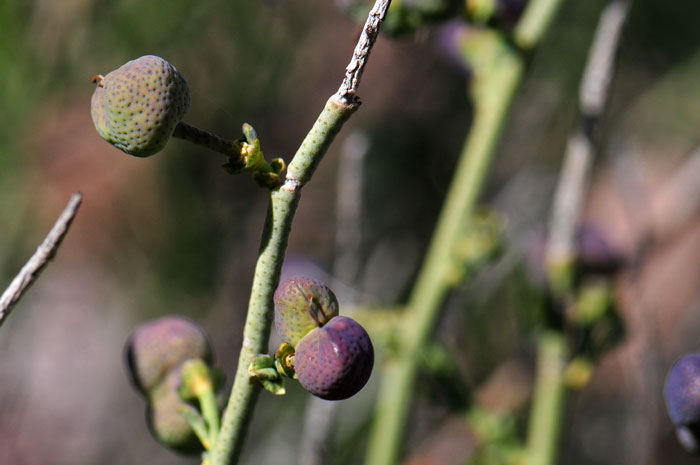Thamnosma montana, Turpentinebroom




Scientific Name: Thamnosma montana
Common Name: Turpentinebroom
Also Called: Dutchman's Breeches, Mohave Desert-rue, Turpentine Broom (Spanish: Cordoncillo)
Family: Rutaceae, Rue or Citrus Family
Synonyms: ()
Status: Native
Duration: Perennial
Size: Up to 2 feet or so.
Growth Form: Subshrub; plants shrubby, herbage yellowish-green; herbage covered with glands, glands similar to those found on citrus (pellucid).
Leaves: Green; usually leafless; simple, alternate, linear spatulate, leaves few, soon deciduous.
Flower Color: Blue, dark blue; sepals greenish, petals elliptic purplish, corolla funnelform or like a cylinder or urceolate; fruit is a deeply 2-lobed globular looking (like a miniature grapefruit) capsule, seeds 4 to 6.
Flowering Season: February to April, March to May in California.
Elevation: Up to 4,500 feet, below 2,500 feet in California.
Habitat Preferences: Desert mesas and slopes, common where found.
Recorded Range: Thamnosma montana is relatively rare in the United States although it is common in preferred habitats. It is native to AZ, CA, NV, UT. Also native to Baja California and northern Mexico. In Arizona it is found in the western ½ of the state. Bullhead City, Arizona, along the Colorado River appears to be close to the center of population.
North America & US County Distribution Map for Thamnosma montana.
U.S. Weed Information: No information available.
Invasive/Noxious Weed Information: No information available.
Wetland Indicator: No information available.
Threatened/Endangered Information: No information available.
Genus Information: In North America there are 2 species and 2 accepted taxa overall for Thamnosma.
In Arizona there are 2 species of Thamnosma, in California, Nevada, New Mexico, Texas and Utah there is 1 species. World wide, The Plant List includes 8 accepted species names with 18 infraspecific rank for the genus. All data is approximate and subject to taxonomic changes.
Comments: Populations of Thamnosma montana are found in both the Mojave and Sonoran deserts however, this species is much more aligned with the environmental parameters of the Mojave Desert.
Thamnosma montana has been used for medicinal and other purposes by Southwestern American indigenous peoples.
Havasupai Drug, Emetic, Decoction of leaves taken one to three times a day to cause vomiting.
Havasupai Drug, Gastrointestinal Aid, Pounded leaves rubbed onto a hurting abdomen.
Kawaiisu Drug, Analgesic, Decoction of stems taken for chest pains.
Kawaiisu Drug, Hunting Medicine, Powdered plant put in deer tracks as an aid in hunting. This procedure would slow down the deer so that it could be overtaken.
Paiute Drug, Misc. Disease Remedy, Decoction of stems taken for smallpox.
Pima Drug, Venereal Aid, Decoction of plant taken for gonorrhea.
Shoshoni Drug, Cold Remedy, Decoction of stems taken or dried stems smoked with tobacco for colds.
See all ethno-botanical uses at Native American Ethnobotany, University of Michigan, Dearborn.

